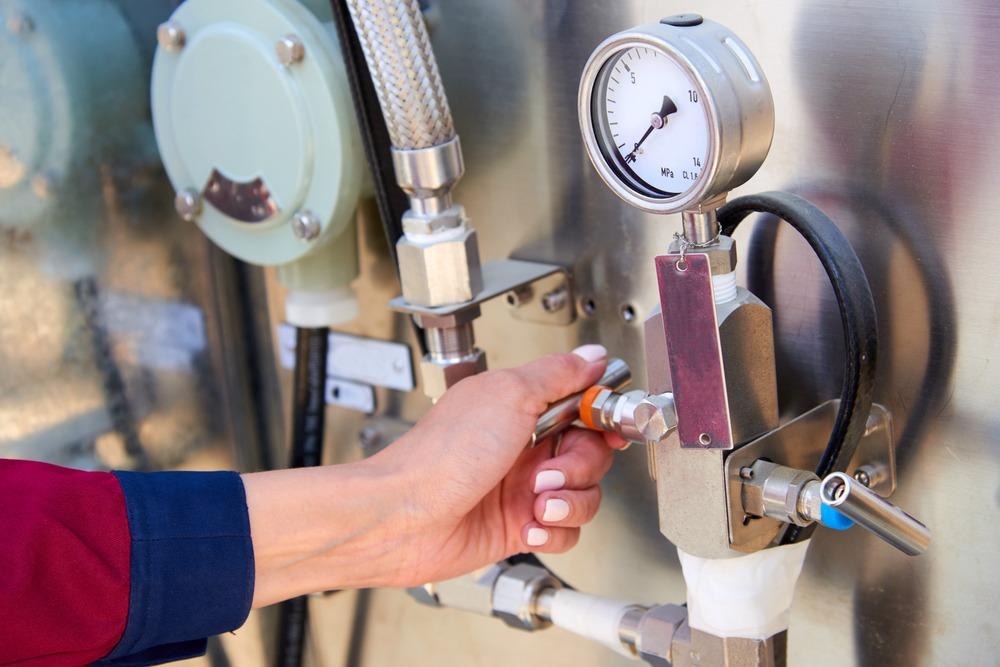The goal of carbon neutrality is of paramount concern, with industry leaders and scientists researching various strategic methods to reduce CO2 emissions. The Intergovernmental Panel for Climate Change (IPCC) has set out this objective to reduce carbon dioxide levels significantly raised due to the activities of humans.

The attempt to reach net-zero global anthropogenic carbon dioxide emissions illustrates the vital requirement for innovative initiatives. A focal point for researchers has been the conversion of carbon dioxide to methanol which can then be used as a renewable energy-based resource. The use of a nano-intermetallic catalyst would be revolutionary for this method, as it has a low energy consumption and high efficiency for a CO2 circular economy. Here, an overview of this promising research is provided, discussing its potential to address a critical concern outlined in the IPCC’s 2021 report.
A circular economy aims to overcome global obstacles such as climate change and pollution. The IPCC has stated that human activities have held a significant level of responsibility for high CO2 emissions, forcing the need for green initiatives to reduce these levels.
If the current detrimental rate continues, the IPCC reports that global warming will reach 1.5 degrees between 2030 and 2052. Having a carbon dioxide circular economy can assist in cutting greenhouse gas emissions, which can aid in reducing global warming.

Image Credit: Yerbolat Shadrakhov/Shutterstock.com
Carbon Dioxide Hydrogenation
The growing concern of climate change and possible ocean acidification has led to innovative environmental research consisting of hydrogenating carbon dioxide to alcohols or other hydrocarbon compounds to recycle this major air pollutant.
Methanol has organic characteristics, which enable it to be a chemical building block for many purposes. It can be used for a range of applications, from plastics to construction materials, and due to growing demand, as a clean and renewable energy source. The recycling of carbon dioxide to methanol would provide an effective method of capitalizing on the high CO2 emissions by converting it into clean energy; this would aid the environmental initiative laid out by the IPCC and assist in reducing harmful carbon dioxide levels.
Hydrogenating carbon dioxide to methanol is through a reverse-water gas shift reaction (RWGS), where carbon dioxide is first converted to CO2 and water; the water is then removed from the reactant gas before entering the methanol reactors.
The reverse water-gas shift reaction is an effective and economically viable approach to handling a large volume of carbon dioxide through methanol synthesis. However, the challenge of obtaining the desired catalyst requires overcoming. The use of photo- and electro-catalytic carbon dioxide hydrogenation has drawbacks like low productivity due to low energy density.
This challenge led to research into nanoparticles and the use of nano-copper and metal catalysts to discover the optimum result of productivity, such as high methanol selectivity.
Novel Research
Novel research has uncovered the use of a nano-intermetallic InNi3C0.5 catalyst for the RWGS reaction due to nanoparticle characteristics, including being active, selective, and a stable candidate for this conversion method. This catalyst consists of dual active sites on its exposed surface and the efficient dissociation of CO2 into CO and ultimately H2O. As it also possesses temperature differences such as desorbing CO at 400 degrees Celsius or higher compared to 300 degrees, this catalyst can be seen as a crucial component of carbon dioxide hydrogenation.
The use of intermetallic compounds as catalyst candidates can be beneficial due to their ability to be easily tuned with reconfigurable electronic structures. Past research has highlighted the benefits of using metal oxide and metal carbide interfaces for the conversion of carbon dioxide to methanol.
Additionally, the use of zirconia (ZrO2) can enhance methanol production rates and selectivity. By combining these components within a catalyst, the environmental objective of reducing CO2 emissions through CO2 conversion into methanol would hopefully be more effective.
InNi3C0.5/ZrO2 Catalyst
A research study by Meng et al (2021), published in the journal Science Advances, investigated the performance of carbon dioxide-to-methanol catalysts which have dispersed InNi3C0.5 nanoparticles onto reducible oxides. The findings included InNi3C0.5/(monoclinic (m))-ZrO2 illustrating high performance with 11.2% CO2 conversion and 85.4% methanol selectivity, as well as confirming that the electron structure of InNi3C0.5 is tuned by ZrO2 (especially by m-ZrO2 due to the abundant oxygen vacancies). This, in turn, resulted in enhanced CO2 activation on the InNi3C0.5 surface, which improved the CO2 conversion rate to methanol.

Image Credit: Khakimullin Aleksandr/Shutterstock.com
Nanotechnology Advancement
Utilizing nanotechnology and nanoparticles in various industries has been revolutionary, with this innovative technology providing novel advancements in many fields. Nanoparticles have a diameter of 100 nm or less, and with significant tuneability, are very useful for selectivity. This enables them to be utilized as a catalytic agent as it can aid in ensuring methanol selectivity is higher than current catalysts. Alongside this, researchers can potentially monitor these particles more effectively.
Nano-intermetallic catalysts’ properties like stability and low cost can be appealing for industries that can potentially utilize carbon hydrogenation into methanol as a renewable source of fuel for vehicles. The potential of this research is promising for many industries which require fuel or an energy resource as it helps to enable the success of methanol synthesis as an alternative renewable resource. As a result, a reduction in CO2 emissions and the creation of a sustainable future through a circular carbon dioxide economy could be achieved.
The creation of a more sustainable circular CO2 economy would require government policies that aim to address global warming issues outlined by the IPCC. In doing so, innovations in catalytic technology will be enabled, increasing the likelihood of cleaner energy sources in industrial applications. Significantly reducing anthropogenic CO2 might become a reality.
--
Industrial Response to Climate Change
This article is a part of the IPCC Editorial Series: Industrial Response to Climate Change, a collection of content exploring how different sectors are responding to issues highlighted within the IPCC 2018 and 2021 reports. Here, Nano showcases the research institutions, industrial organizations, and innovative technologies driving adaptive solutions to mitigate climate change.
References and Further Reading
Meng, C., Zhao, G., Shi, X., Chen, P., Liu, Y. and Lu, Y., (2021) Oxygen-deficient metal oxides supported nano-intermetallic InNi3C0.5 toward efficient CO2 hydrogenation to methanol. Science Advances, 7(32), p.eabi6012. Available at: https://doi.org/10.1126/sciadv.abi6012 [Accessed 9 September 2021].
IPCC. (2018) Summary for Policymakers. Global Warming of 1.5°C. An IPCC Special Report on the impacts of global warming of 1.5°C above pre-industrial levels and related global greenhouse gas emission pathways, in the context of strengthening the global response to the threat of climate change, sustainable development, and efforts to eradicate poverty. Available at: https://www.ipcc.ch/ [Accessed 9 September 2021].
IPCC. (2021) Summary for Policymakers. Climate Change 2021: The Physical Science Basis. Contribution of Working Group I to the Sixth Assessment Report of the Intergovernmental Panel on Climate. Available at: https://www.ipcc.ch/ [Accessed 9 September 2021].
Chen, P., Zhao, G., Shi, X., Zhu, J., Ding, J. and Lu, Y., (2019) Nano-Intermetallic InNi3C0.5 Compound Discovered as a Superior Catalyst for CO2 Reutilization. iScience,17, pp.315-324. Available at: https://doi.org/10.1016/j.isci.2019.07.006 [Accessed 9 September 2021].
Jiang, X., Nie, X., Guo, X., Song, C. and Chen, J., (2020) Recent Advances in Carbon Dioxide Hydrogenation to Methanol via Heterogeneous Catalysis. Chemical Reviews,120(15), pp.7984-8034. Available at: https://doi.org/10.1021/acs.chemrev.9b00723 [Accessed 9 September 2021].
Joo, O., Jung, K. and Yonsoo, J., (2004) CAMERE Process for methanol synthesis from CO2 hydrogenation. Carbon Dioxide Utilization for Global Sustainability, Proceedings of 7ththe International Conference on Carbon Dioxide Utilization, pp.67-72. Available at: https://doi.org/10.1016/S0167-2991(04)80221-0 [Accessed 9 September 2021].
Larmier, K., Liao, W., Tada, S., Lam, E., Verel, R., Bansode, A., Urakawa, A., Comas-Vives, A. and Copéret, C., (2017) CO2-to-Methanol Hydrogenation on Zirconia-Supported Copper Nanoparticles: Reaction Intermediates and the Role of the Metal-Support Interface. Angewandte Chemie International Edition, 56(9), pp.2318-2323. Available at: https://doi.org/10.1002/anie.201610166 [Accessed 9 September 2021].
Disclaimer: The views expressed here are those of the author expressed in their private capacity and do not necessarily represent the views of AZoM.com Limited T/A AZoNetwork the owner and operator of this website. This disclaimer forms part of the Terms and conditions of use of this website.